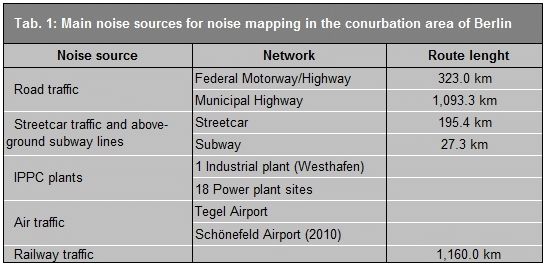Legal Provisions and Competent Authorities
The “Directive of the European Parliament and of the Council relating to the assessment and management of environmental noise” came into force on February 18, 2002, when it was published in the Official Journal of the European Community. For the European Community, this opened the path to legal provisions covering noise immission into the environment.
The German Federal Environment Agency (Umweltbundesamt) describes the objectives of the Directive as follows:
“Ensuring a high degree of health and environmental protection is part of the Community policies, one of the objectives being noise protection.” To achieve this, “adverse effects of and annoyance caused by environmental noise must be prevented, avoided and reduced.” This requires the following action:
- determining the load caused by environmental noise by means of noise maps, according to assessment methods to be used by all Member States;
- ensuring that the public is informed about environmental noise and its effects;
- adoption of action plans by the Member States based on the results of noise maps, aiming to prevent and reduce environmental noise where necessary, particularly in cases where exposure levels might have effects detrimental to health, and further aiming to maintain environmental noise quality where it is good.
Furthermore, the Directive is to form the basis for the further development and enhancement of measures to reduce the noise emission of the most relevant noise sources, also to inform the European Commission about the exposure caused by environmental noise in the Member States.
The Senate Department for Urban Development and the Environment (SenStadtUm) has ordered and implemented the Noise Mapping Project 2012, an update of the Noise Mapping Project 2007, for the State of Berlin, as provided in the requirements of the Noise Mapping Ordinance and the Federal Immission Protection Ordinance (34th BImSchV/ Bundes-Immissionschutzverordnung), in connection with §§47 a-f of BImSchG (Federal Immission Protection Act / Bundes-Immissionschutzgesetz) and Directive 22002/49/EC (Environmental Noise Directive), with the current LAI instructions on noise mapping taken into consideration.
Due to distinct responsibilities, only the noise maps created by the Senate Department of Urban Development and the Environment are published here. These include road traffic (motor vehicles including buses), streetcar traffic and traffic on the above-ground sections of the subway/underground, air traffic as well as industrial and commercial lots.
The analysis of noise from rail traffic according to the General Railway Act (Allgemeines Eisenbahngesetz, AEG) is published here on the site of the Federal Railway Authority (Eisenbahn-Bundesamt, EBA).
The plan aims at creating strategic noise maps and the related statistical evaluations (exposure for humans, dwellings, schools and hospitals in specific immissions-level classes). The results were prepared with respect to the following items for further utilization by customers:
- basis for reporting to the EU and for informing the public
- basis for continuing the Noise Action Plan 2013 (noise reduction planning for Berlin [in German])
- basis for managing the output data (data model care)
- basis for re-calculation and evaluation of spatially defined areas.
The BImSchG, §§ 47 a-f, sets the rules for implementing the EU Environmental Noise Directive under German law. The 34th BImSchV defines the requirements for noise maps under §§47 c of the BImSchG.
Noise maps must always be based on calculations. The calculations must comply with the preliminary calculation rules set by the EU, which in some respects differ from the Technical Codes applicable under national law (see below, Calculation Method).
Noise maps are to be reviewed and, if necessary, revised every five years, after they have been drawn up (Level 1 in 2007; Level 2 in 2012; Level 3 in 2017; etc.).
General description of major noise sources by location, magnitude and traffic occurrence/extent of mapping
The boundaries of the area of investigation are the borders of the state of Berlin. The noise sources to reinvestigate are:
- Road traffic (motor vehicles including busses)
- Streetcar traffic and above-ground subway/underground traffic
- Industrial and commercial lots with facilities as per Annex 1, Directive 96/61/EC of the Council of September 24, 1996, on the Integrated Prevention and Reduction of Environmental Pollution (IPPC facilities, including power plant sites and the Westhafen [Western Port]).
- Air traffic
- Rail traffic according to the General Railway Act (AEG)
Significant other major noise sources of road traffic in areas of the state of Brandenburg near the Berlin border which exceed the stipulated immission level were also included.
An overview of the noise sources included is shown in Table 1:

